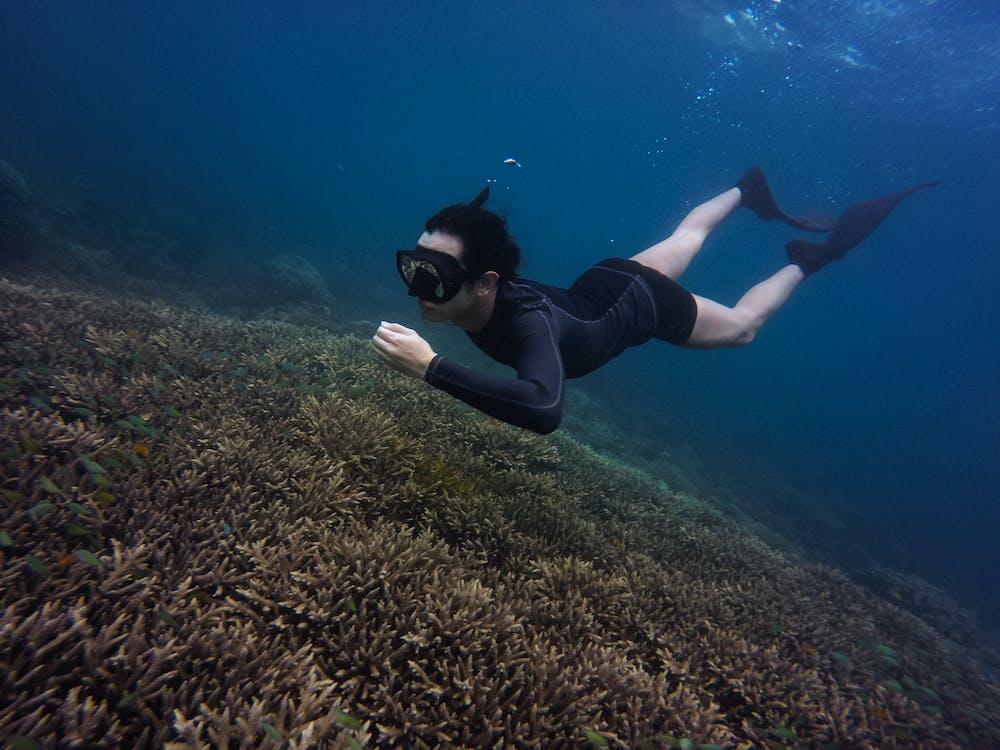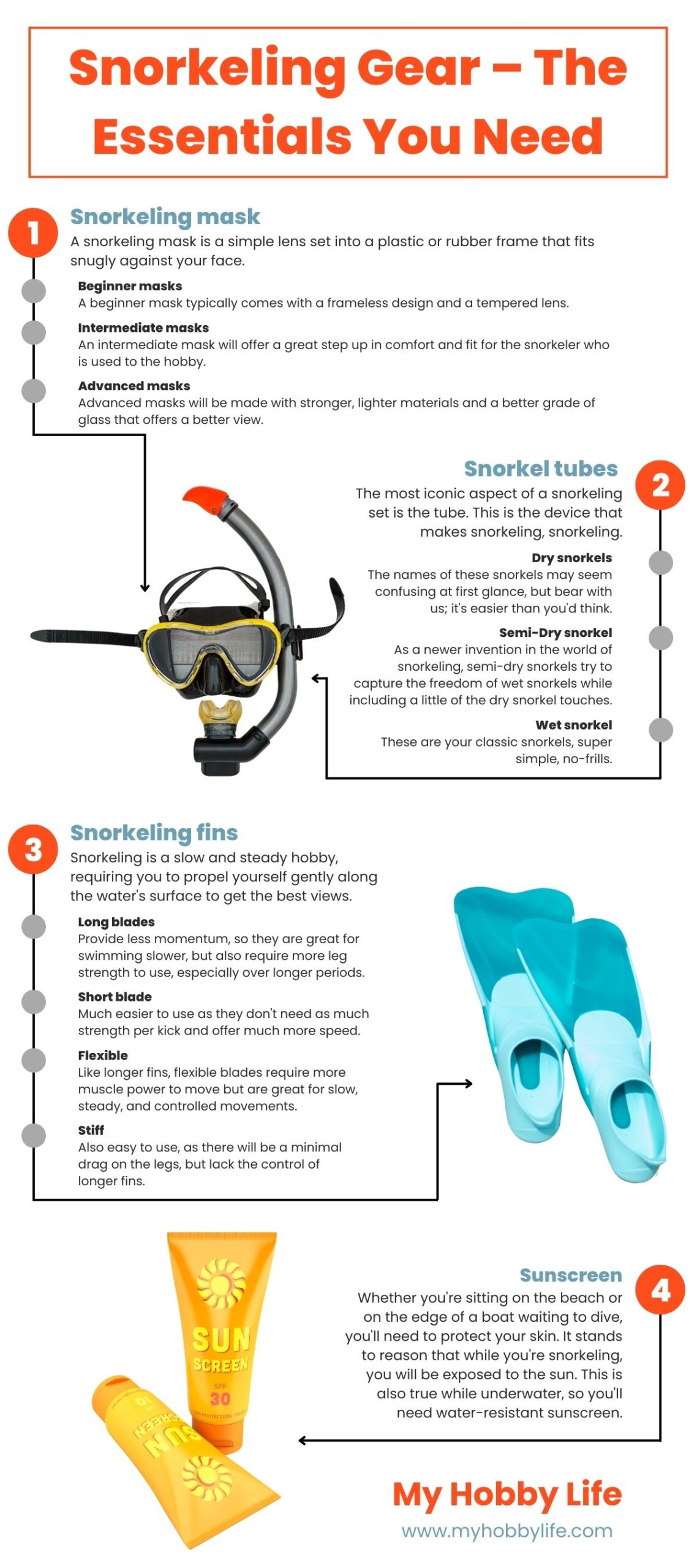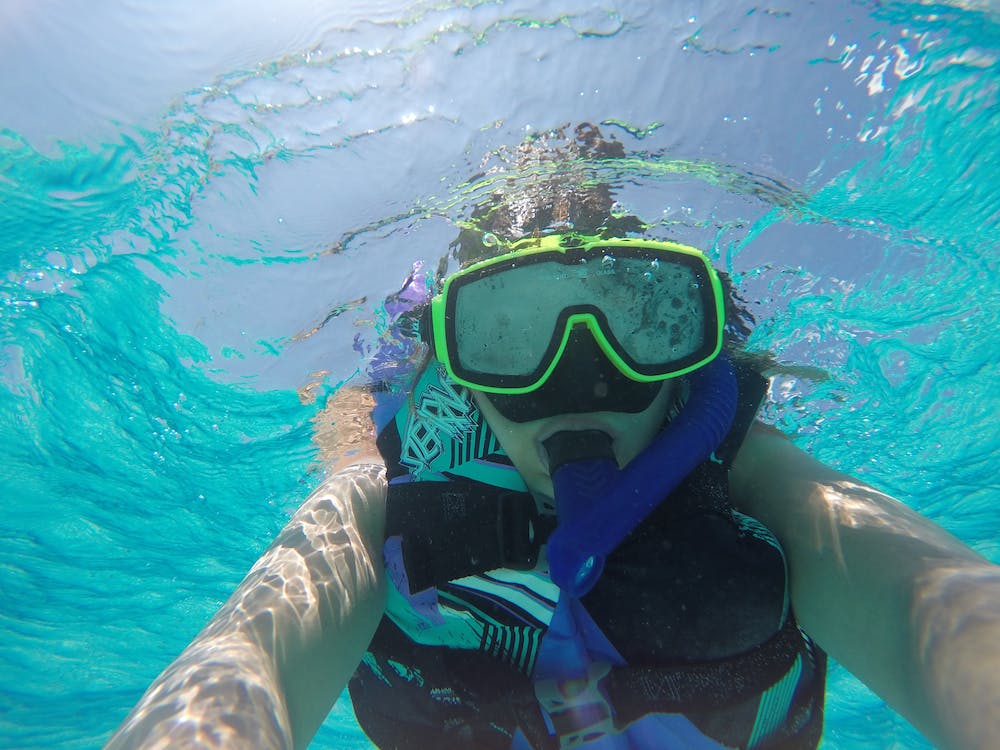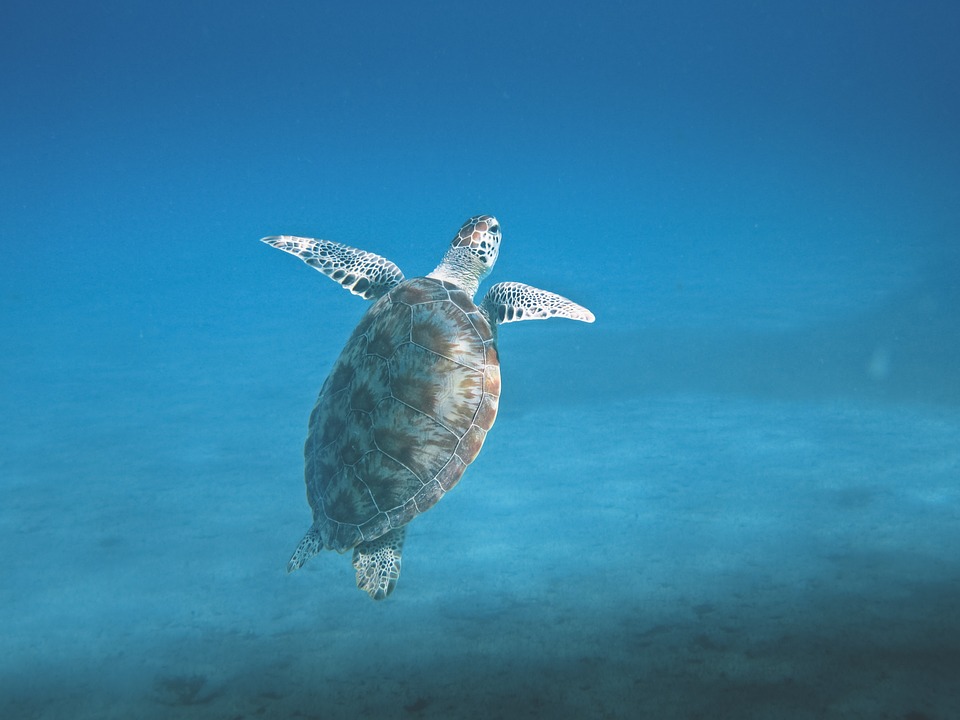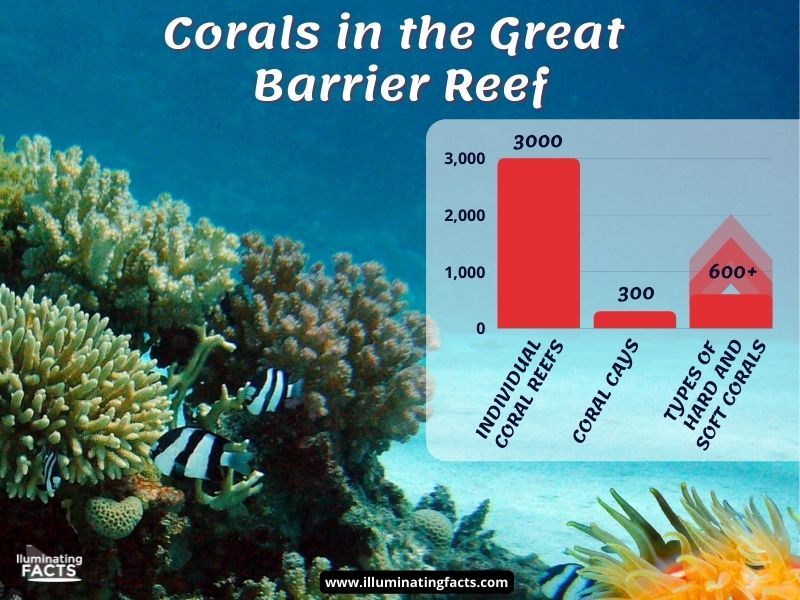If you’re looking for a unique vacation experience, why not try snorkeling? Snorkeling is a great way to explore the underwater world and discover its hidden beauty. It allows you to explore the wonders of the ocean by exploring a shallow reef or delving deep into an underwater cave.
With so many amazing destinations around the world, more and more people are trying out this exciting and thrilling activity every year. However, since you’ll be getting up close and personal with the natural environment, it is important to practice safety and respect marine life. Before you set out to explore the underwater wonders, it is important to be aware of how to snorkel safely and responsibly.
In this blog post, we discuss the importance of snorkeling safely and responsibly. The post also covers the important tips for choosing the right gear and avoiding common mistakes while snorkeling.
Choosing the Right Snorkeling Gear
The right gear is essential for a safe and enjoyable snorkeling experience. There are four main pieces of snorkeling gear that you need as follows:
Mask
A good snorkeling mask is the one that fits properly and does not leak. It should also be comfortable and offer good visibility. To ensure a proper fit, loosen all straps before placing the mask over your face. Now, hold the top of the mask near your forehead, and press its bottom firmly against your face as you inhale through your nose. If the mask doesn’t form a seal around your face, then it is not the right size or shape for you. The lenses in the mask should also be made from shatterproof materials. This keeps them protected against accidental impact with hard surfaces such as coral or rocks.
Snorkel
There are two main types to choose from: dry or semi-dry. Both types prevent water from entering the tube when submerged but have different designs. Dry snorkels have an enclosed top that prevents water from entering even when submerged underwater, while semi-dry snorkels have an open top with a splash guard. It prevents water from coming in when submerged in shallow water, but allows some water in when deep underwater. A silicone mouthpiece is usually more comfortable than those made from plastic; modern snorkel designs allow for easier breathing with their angled and curved shapes.
Fins
Fins are an essential piece of snorkeling equipment that provide you with control over your movement and help you move more efficiently in the water. When selecting fins, make sure they fit snugly around your ankles without being uncomfortable. A pair that is too tight might cause cramping in your feet and legs. While the one that is too loose may make it difficult for you to move around in the water.
Snorkel fins can be full foot fins covering your whole foot or open heel fins which require booties. Full foot fins are best suited for beginner snorkelers, while adjustable length open heel fins offer more speed and control. It is important to select fins that fit well and can provide you with adequate propulsion through the water without causing undue stress on your feet and legs.
Wetsuit
A wetsuit is an optional piece of snorkeling gear, but may be necessary depending on the temperature of the water you are going in or the type of marine life you might encounter. Certain jellyfish or sea urchins may call for an additional layer of protection.
Wetsuits come in different levels of thickness ranging from 0.5 mm shorty suits up to 7 mm thick full body suits for superior insulation in colder waters. Make sure that whatever wetsuit you choose fits well and allows natural movement underwater without feeling too tight or restrictive in any way.
If you choose to forego the wetsuit, make sure that you are wearing appropriate thermal protection to safeguard yourself from cold.
Safety Tips for Snorkeling
Being aware of your environment at all times is important when snorkeling. It enables you to stay safe during your adventures in the ocean. Plus, it is important to know your own limits and abilities. Here are some safety tips to keep in mind:
Know Your Limits
Before you set out on any snorkeling adventure, it is important to assess your own abilities and physical fitness levels. It ensures that you don’t push yourself too far or take any unnecessary risks while out in the ocean.
It is particularly important with regard to diving depth and physical activity requirements underwater. If you start feeling uncomfortable or become exhausted, back off and take some time out of the water before attempting any more activities or challenges. Don’t put unnecessary strain on your body or push yourself beyond your current capabilities.
Make sure that you are comfortable swimming both above and below water. Just because navigating with fins looks easy, it doesn’t always mean it is going to be!
Stay Aware of Your Surroundings
Staying aware of your surroundings at all times is incredibly important, but it becomes crucial while snorkeling. Especially, if you are not able to swim well or have limited experience with being underwater.
Always stay close enough to shallow water where you can stand up comfortably when needed. Although it may be tempting, try not venture too far away from land. Make sure to take note of where currents might push you off course or where shallow areas are so you can avoid them when necessary.
Avoid Touching the Marine Life
Respectful observation of marine life from a distance is the key when it comes to responsible snorkeling. As you admire the stunning fish and other sea creatures around you, never forget that they are wild animals living their own lives. Touching, harassing or attempting to capture them is not right and even illegal in some regions. Doing so not only stresses them out, but can also result in physical harm or possible exposure to toxins or bacteria that may come from their bodies or habitats.
Not only does this practice pose serious health risks for humans, it further damages the natural ecosystems already suffering from human caused impacts such as pollution and habitat destruction or fragmentation. So be sure to give them plenty of space and admire from afar!
Use Sunscreen and Protective Clothing
As with any other outdoor activity, sun protection should be at the top of every snorkeler’s list when it comes to hitting the beach. Continuous sun exposure can quickly cause sunburns, so it is important to protect yourself. Make sure to generously apply an SPF 30+ sunscreen over all exposed skin prior to leaving land. Plus, wear protective clothing such as rash guards or t-shirts when out on-site.
Watch out For Boats and Other Watercraft
Being aware of boats or other watercraft that may be operating nearby is also important. They might not always spot you, so make sure you don’t go too close while snorkeling.
If a boat passes near you while you are underwater, it may create a significant wave, which can quickly push you off balance. Make sure to stay away from busy boat traffic routes and snorkel in areas that are quieter. As an added bonus, quieter areas also tend to have more colorful marine life.
Environmental Tips for Snorkeling
Snorkeling in underwater environments comes with a certain responsibility towards nature. You must remember that marine ecosystems are delicate, so you have to be very careful while swimming through or around them. Here’s what you should and should not do:
Respect the Natural Environment
This is one of the most important things any tourist should remember. When traveling anywhere, regardless of the purpose, you should exhibit respect for those living there as well as the local environment. The responsibility increases tenfold when engaging with activities that involve natural resources, like snorkeling.
Always take extra care when traveling through coral reefs, seagrass meadows, or rocky shallows. Swimming away from these areas is better than going directly over them, so your fin strokes don’t disturb any marine life or their habitats. Keep noise levels down as loud sounds can quickly frighten nearby creatures away.
Don’t Litter
Littering pollutes our oceans and should be avoided when engaging in aquatic activities. Pack items such as sunscreen bottles or snack wrappers in sealed dry bags, so no litter escapes into the sea. Try using reusable containers instead of single use plastic whenever possible.
Anything you leave behind can quickly accumulate, becoming a potential harm towards species living within these zones. Minimize your impacts by leaving nothing behind except your bubble trails!
Avoid Stepping on or Damaging Coral Reefs
Never step directly onto a coral or attempt to move anything without first consulting experts about what damage could occur by your move. Fragile marine ecosystems often take years to rebound after disturbances.
Coral reefs are home to thousands of tropical species. The Great Barrier Reef alone has about 300 coral cays. It is okay to view them from a distance, but refrain from doing anything that might cause damage.
Common Mistakes to Avoid While Snorkeling
Snorkelers, both new and experienced, commonly make mistakes. Here are a few important things to keep in mind when snorkeling:
Panicking or Hyperventilating
Avoid panicking or hyperventilating as you snorkel. It not only makes swimming difficult, but also increases the risk of drowning! Doing simple things like counting breaths while swimming and staying close enough to shallow depth helps reduce risk of panic attacks.
If you feel scared, start breathing deeply through your mouthpiece and count your breaths. This helps calm nerves quickly. You can also practice ‘bicycle’ kicks whilst floating horizontally in shallow water, until you start feeling comfortable enough to descend into deeper water.
Touching or Harassing Marine Life
We all love seeing marine animals in their natural habitat. However it is crucial not to touch or attempt to chase them. This could cause immense distress which may lead these creatures towards deathly situations. Respect their freedom by not disturbing the underwater life.
Failing To Equalize Pressure in the Ears
Pressure changes often happen quickly underwater due to depth changes. Failing to equalize pressure inside your ears may cause immense pain.
Always make sure ears feel ‘normal’ before continuing or diving in any further. Practice and prime yourself for snorkeling by regularly training and taking dive sessions to avoid discomfort under the sea.
Holding Your Breath While Diving
Holding breath while diving is a mistake commonly made by snorkelers. New divers practice breathing up-down cycles and are reminded to keep breathing as it helps maintain steady oxygen levels throughout the body.
Holding your breath cuts down the oxygen supply, causing a negative impact on both cardiovascular respiratory systems. It can push you towards black out, which is very risky when snorkeling. If you feel anxious, stop, relax, and start breathing deeply. Maintain a steady rhythm and count your breaths until you feel comfortable again. If not, there is always a next time.
Conclusion
Snorkeling is a great way to explore life beneath the surface of the ocean without needing extensive diving training or certification. Just make sure you have the proper gear and follow some basic safety guidelines before heading out into the water.
Additionally, remember to always respect your environment by preventing litter, avoiding touching wildlife, and not stepping on coral reefs or other sensitive habitats. Being mindful of these safety tips and environmental responsibilities can help you have an enjoyable snorkeling experience.

